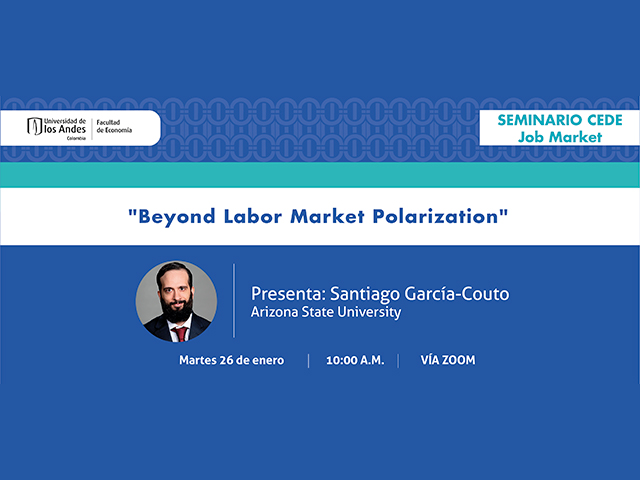Seminario CEDE - Santiago García-Couto

It is well documented that routine-biased technical change ("RBTC") led to labor market polarization during 1980-2000. In particular, the employment and wages of non-routine occupations, which include low-wage manual and high-wage cognitive ones, increased relative to routine occupations. I document that during 2000-2016, wage polarization stopped in that the wages of non-routine manual occupations fell in relative and absolute terms. I study the end of wage polarization through the lens of a dynamic general equilibrium model with RBTC, human capital accumulation, and occupational mobility. I find that during 2000-2016, RBTC continued to take place, but human capital accumulation and occupational mobility changed. In particular, compared to workers in routine occupations, workers in non-routine manual occupations had lower initial human capital and accumulated less human capital whereas workers in cognitive occupations had more initial human capital and accumulated more human capital than before. During 1980-2000 the changes in the human capital accumulation of the occupations were similar to those during 2000-2016, but during the second period mobility across occupations fell, which magnified the differences in human capital accumulation and led to the end of wage polarization.

